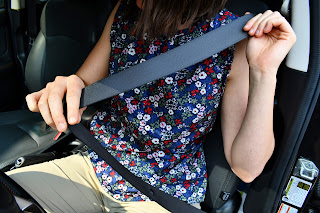Love Series, Episode IIIb
We are here again (smiles), I and Ela, although Ela is
yet to take her seat, guess she will fly in any moment from now. Talking about
flying, I was on a bike during the week, when one of Ela’s many relatives flew
by emptying it’s bowels on the bike man and the last drop landed on the suit I
held in my hands *angry*. Those times when you wish you had a catapult or
something to gun him or her down, just that i didn’t want to mistakenly gun
down Ela (Laughing so hard). Plan on telling Ela, either they become more
civilised and use a toilet or they ensure their bowels are emptied before
leaving the land for air.....lol for crying out loud this the 20th century. Anyway that’s how our maker
designed them.
Here she comes......
Yspot!:
Ela!!!!
Ela: Wise
spot!!! Twop of da daii to you
Yspot!: How are you dear? So what tribe should we visit today?
Ela:
hmmmm...twink you shwuld decwide that for us today
Yspot!:
*smiles*. Ok, I say Eggon.
Ela: Never
heard of thwem
Yspot!: I
bet you are not alone. The first time I heard of them was back at school when I
met my friends, Lydia, Anne and Esson. You would love them, they are good
people.
Taking us down this road is my friend Lydia Aluma-
Lichotonsinghai!!!
Lydia:
Hello peeps, believe you are all doing great. It’s quite a long distance; I
hope we are all ready to go that far.
Yspot!:
Well we thank God for Wings- Ela *wink*, can you help? We need you relatives
now (after their bowels are emptied though.....lol).
Ela: No
poorblem.
Lydia:
alright then, I’ll lead the way.
The Eggon people are from Nasarawa state located in
north central Nigeria. They are found mostly in Nasarawa Eggon, Lafia and
Akwanga local governments of the state. They speak Eggon language and have
several clans, the major being Anzo, Eholo and Eggon Ero. The word Eggon means
"a good sense of hearing or perception ability" (Blench R., 2006). The Eggon people are indeed
hospitable.
Marriage
The way marriage is conducted in Eggon land, as in
most cultures in Nigeria, has changed over time. In the past, a female child
was betrothed to a boy, recommended by the midwife after birth. The boy was
either related to the midwife, a member of her clan or a friend to her family.
The family of the female child gave their consent by accepting a bunch of
firewood, which is used to boil water and to keep the baby warm. Gamba grass
was also given to be used as lamp. The suitor afterwards presented food items
which include twenty five tubers of yam, sheaves of guinea corn, maize,
measures of acha and others as the need may be, annually to
his betrothed’s family until she was considered mature for marriage. He was
also engaged in farming activities for the family. He was meant to mobilize at
least twenty five friends to farm the land the year he intended to get married.
Once the betrothed’s parents were satisfied, the bride was captured and taken
to the groom’s house. This was followed by feasting, dancing and merry making
(Blench R., 2006).
Nowadays, a lady informs her parents of her desire to
get married to her suitor. The suitor then comes in company of his Kinsmen, on
invitation by his to be parents in law, to declare formally, his intention to
get married to their daughter. The guests are received, entertained and a man
from the lady’s family is saddled with the responsibility of a mediator. His
function will be to relate all information in regard to the engagement
afterwards. This first stage is called the introduction.
The family of the lady, after discussion, issue out a
list of items to be met for the engagement process and marriage ceremony. They
include guinea corn, maize, goats, cocks, pig, palm oil, black and white sesame
seeds, white broad beans (called ebyekpen) and drinks. Some amount
of money to pay as bride price is also specified.

The suitor is also expected to buy certain items
for his mother in law to be. These include items such as a bag, pair of shoes,
wrapper, umbrella, lamp, scarf, blouse, earrings and necklace, skirt, and a
large basin. He gets his bride a box, clothes and other items as he so desires.
It should be noted that these items may vary in quantity from clan to clan.
The Ceremony

The
bride, dressed with beads and traditional attire, accompanied by her friends,
relatives and dancers, go to see the meal prepared. The couple feed each other
and the meal is carried by the groom’s family to the bride’s family house.

Most
brides often change into some other attire, which is usually same as that of
the groom. There is a lot of feasting and dancing to Eggon music, characterised
by mostly by flute sounds and drum beats. The meal, also called algo
ogu meaning kindred meal, and other items are shared by both familes
before departure.
That's
all!!!!
Lydia
Aluma
*************************************************************
Thanks
lylu.
More
to come.......stay tuned.

Comments
Post a Comment
Thank you for visiting this blog.I believe you were inspired.